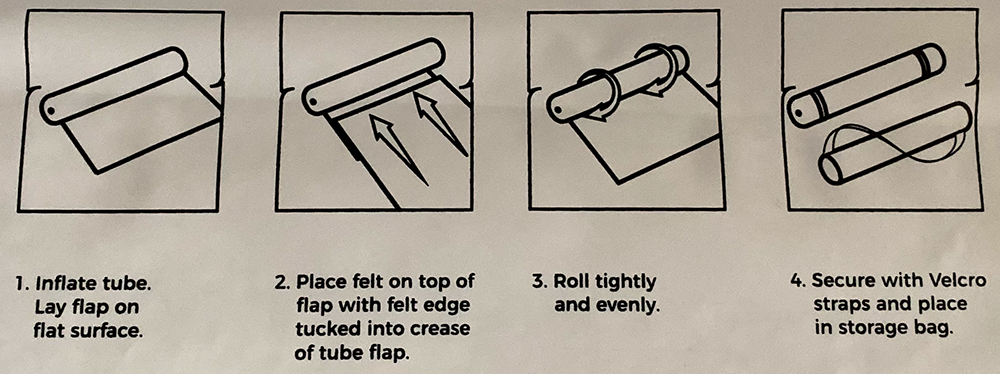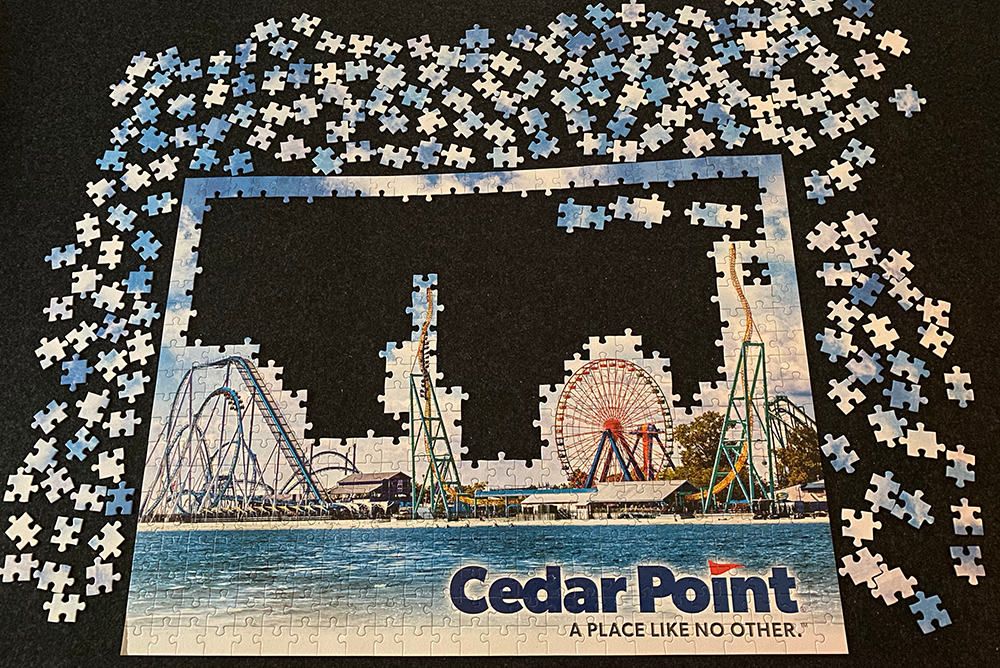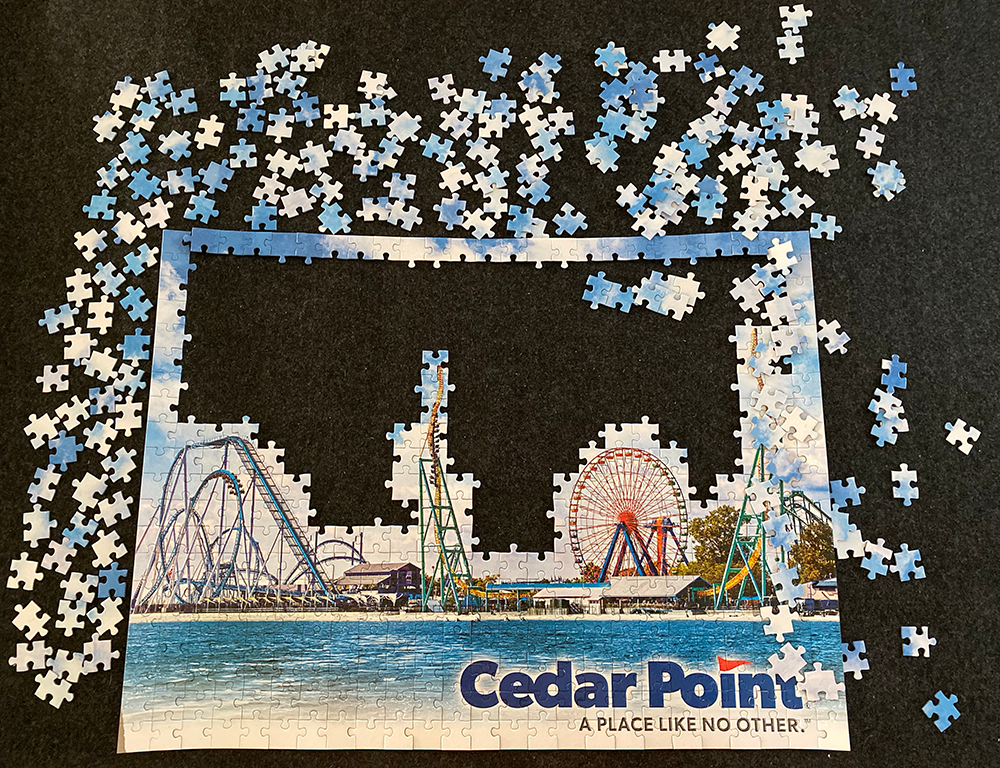This mat certainly does the trick for storage concerns, but has a few drawbacks that keep it from being perfect.
Picture this: Your family is putting together a jigsaw puzzle when you decide it’s time to take a break, or even stop for the day. What do you do? If the puzzle is in a safe spot, where any pets and littles in the family can’t get to them, you could just leave it where it is and come back to it another day without worrying about your progress being destroyed or the pieces becoming chew toys. But what if you do puzzles somewhere else, like on the dining room table or another surface that serves multiple purposes?
Puzzle mats, in theory, allow you to safely roll up your puzzles into a long tube shape, which can be easily transported and/or stored until you’re ready to come back to them. While I’m an avid jigsaw “puzzler,” I remember having a negative experience with a puzzle mat too many years ago now to remember the exact brand or details, but it caused me to write them off entirely as not being worth the cost. However, Grateful House’s puzzle mat has changed my mind.
Imagine placing a jigsaw puzzle on a piece of fabric and then rolling that fabric up into a tube-like shape. More than likely, your pieces are going to break apart, or slide out of the fabric if you stand it upright.
The Grateful House puzzle mat includes an inflatable tube (you have to blow it up) that you place on top of the mat before you begin rolling. This ensures the mat rolls up into a nice round shape, and you get a tight fit that will (generally) hold your pieces where you left them. (Keep in mind, if you have pieces too close to the edge of the mat, they may fall out.)

The mat itself is made of a wool blend (felt), and there are different colors and sizes of mats to choose from. The mat we tried was 30” x 48”, and is advertised as being able to hold a 2,000 piece puzzle.
Once you roll the mat up with your puzzle inside, you can use the two included velcro straps to hold the tube together so it doesn’t unroll, and then place the entire tube inside a protective bag with a carrying strap for easy transportation and/or storage.
Traditionally, I put puzzles together on top of a tri-fold presentation board (like students use in science fairs), so that I can easily glue them together after completing them. If I don’t finish a puzzle in a single sitting, I physically move the board to a safe spot in the house to protect it from our curious cat.
This isn’t the best solution, as the puzzles are still technically exposed and can be jostled by clumsy humans, but it’s the best thing I could come up with given my circumstances. With Grateful House’s puzzle mat, however, I have more peace of mind that my puzzles will be safe until I return to them. Plus, if I know it will be some time before I get back to a puzzle, having a rolled up tube in the corner is a lot better than watching out for a large presentation board spread on the floor.
In our experience, yes, it does work. With so many different companies creating jigsaw puzzles of wildly varying qualities, your experience may change from puzzle brand to puzzle brand. We did have a few pieces break apart with the puzzles we tried, but the “damage” could be repaired in a few seconds and we could get back to puzzling.
For a visual comparison, check out the two images below. The first picture was taken before rolling the puzzle up and putting it in the bag.

The second picture was taken immediately after unrolling the puzzle, without any straightening or fixing to make it “camera ready.” The puzzle was in storage, standing upright, for a few days between these pictures. (For context, this is a 500 piece, 18” x 24” puzzle, and no pieces are left in the box.)

When we took the puzzle out of the tube to take the second picture, a single loose piece fell out of the mat. In addition, if you check out the right side of the puzzle, you can see many loose pieces that were originally resting to the right of the puzzle ended up on top of the portion we had already finished. However, the main portion of the puzzle experienced only minor splits. The puzzle also appears “curved” in the after picture, as if it molded to the shape of the inflatable tube, but this wasn’t permanent.
Finally, it’s worth pointing out that the mat “grips” ahold of pieces even when it’s laying flat, so, depending on the puzzle, you may have difficulty moving pieces around. Plus, the mat itself “sheds” a bit (you may notice some fibers on the inflatable tube when you remove it).
Grateful House’s puzzle mat isn’t perfect. The wool blend can sometimes hold puzzle pieces too securely, making it difficult to move chunks of pieces around, and the material also holds onto stray hairs (like pet hairs) and other debris. You may also have some loose pieces move around while the main puzzle stays intact. In the end, though, the mat does its job pretty well, and we recommend looking into it if you’re interested in picking up a puzzle mat for your family.
Disclosure: Grateful House provided SuperParent with a puzzle mat for coverage purposes.
Brandy Berthelson has been writing about video games and technology since 2006, with her work appearing on sites including AOL Games, Digital Spy, and Adweek. When she’s not gaming, Brandy enjoys crafting, baking, and traveling with her husband.